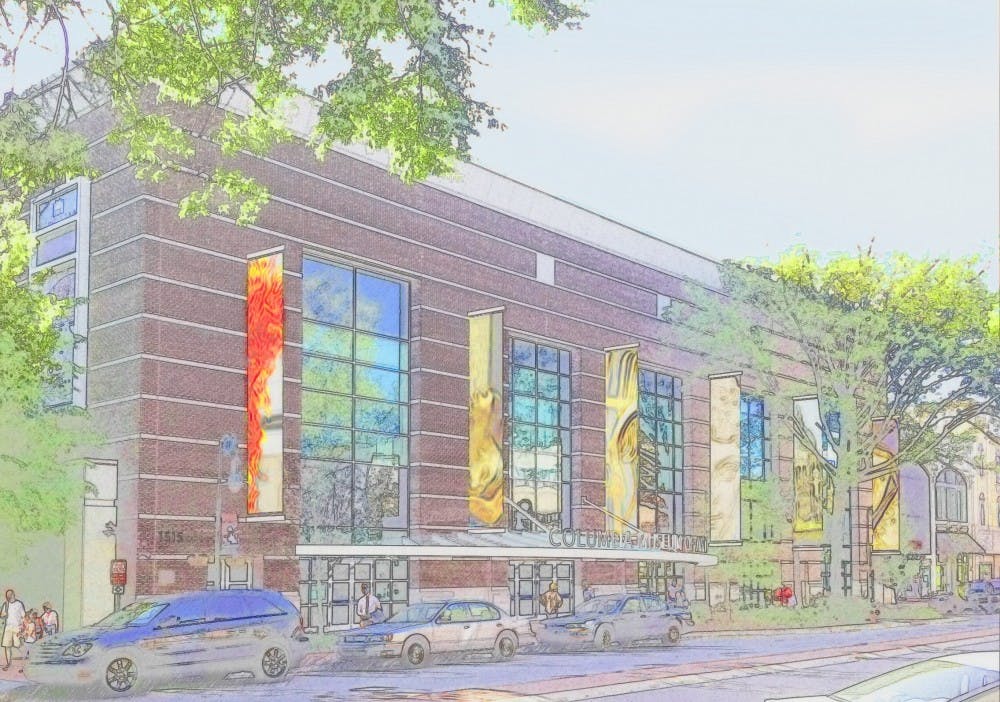About 20 years ago, Main Street was a quieter place. There was little attraction to the area past the Statehouse – no farmer’s market on Saturday mornings, no cafes and no venues for entertainment.
With the arrival of some of Columbia’s now-strongest cultural centerpieces — such as the Nickelodeon Theatre, the Columbia Museum of Art and Tapp's Art Center — the Main Street district underwent a bit of a cultural renaissance. This year, one of the pioneers of the Main Street development, the Columbia Museum of Art, started a renovation project that will last until the fall of 2018, to make the arts more accessible to the community.
The museum’s renovations can best be broken down into three categories: gallery expansion, a Main Street entrance and a program and events space. Although the building itself will not be expanded or fundamentally changed in its size or footprint, over 15,000 square feet are currently being renovated to make better use of the space at hand.
The first set of renovations applies to the expansion of the gallery on the second floor of the museum. While the museum’s collections have been growing, their galleries struggled to showcase the influx of modern and contemporary artworks. The only space these works could fit was in the first floor gallery, but this gallery was often homing temporary exhibitions.
“That was always something we felt like was a bit of a deficit,” said Joelle Ryan-Cook, deputy director and director of external affairs. “We were missing some really significant opportunities to have our audience see what modern and contemporary collections were like, and there were some pieces that people love. So we really felt like that gallery expansion needed to land there.”
As the second floor gallery is currently being renovated, there are no works on exhibition upstairs at this time.
The construction of the Main Street entrance stems from the booming weekend and nightlife scene in the Main Street district. As the building currently stands, the main entrance to the lobby of the museum is in Boyd Plaza, accessible from Hampton Street. There is a small entrance on Main Street to the museum’s gift shop, but it does not provide direct entrance to the lobby.
“When we built and opened the building in 1998, Main Street was a very different place. In fact, we were asked by City and County Council to locate a new facility downtown, on Main Street, to help anchor revitalization of that area of the downtown,” Ryan-Cook said.
Since Main Street has now evolved into an area that is not just business hours only, the museum wanted an accommodating entrance to keep up with the growth of the city.
“We, because of that activity, really felt like we needed a door on Main Street,” Ryan-Cook said. “We will be adding this Main Street entrance to help really engage the museum with that now walking traffic that’s going past our building on a regular basis.”
The final installation of revitalizations will be a new programming space that will allow for more educational opportunities and events to engage the public. This space, added to the second floor, will also be available for rentals.
The new Main Street entrance will also accommodate this new public space. An additional entrance will allow event-goers to enter the museum and get to the public space without adding to the foot-traffic of the regular museum-goers. This adds a dual-functionality to the museum – it becomes not just a space to showcase art but also a space for more programming and interactive activities and partnerships.
Along with the new programming space, there will also be a new interactive gallery on the first floor of the museum. The current interactive gallery is small and geared mostly toward children. However, by observing curious patrons throughout time, the museum administration noticed that it was not just kids who enjoyed using this space — adults found it entertaining, too. Recognizing this, the administration decided to construct a larger, more comprehensive interactive gallery for museum-goers of all ages and types.
With any kind of construction brings added inconveniences. In this instance, the second floor will be unavailable to patrons at present until the renovations are complete. However, the museum administration has recognized this and tried to compensate for the burden. During the time of renovation, all admissions prices will be reduced by half, making the cost $2.50 for students and $6 for general admission. On the second Sunday of every month, admission to the museum will be free, including the featured exhibits.
The museum’s renovations bring into question the perceptions and future of Columbia. The city is often associated with football, a large university and the Statehouse and related buildings. And while it is true that Gamecock football is deeply important to Columbia’s culture and that the university makes up a large part of the city, just as important is the deep artistic culture that has surfaced and grown further since the advent of the Columbia Museum of Art, Richland Library, Indie Grits and many more organizations. People are noticing this, and now Charleston is not the only city in South Carolina where homeowners are looking to purchase a summer home.
Perhaps the future of Columbia will be one that is more multi-faceted than just one avenue of entertainment or nightlife. The Columbia Museum of Art might just be taking a step in that direction.

